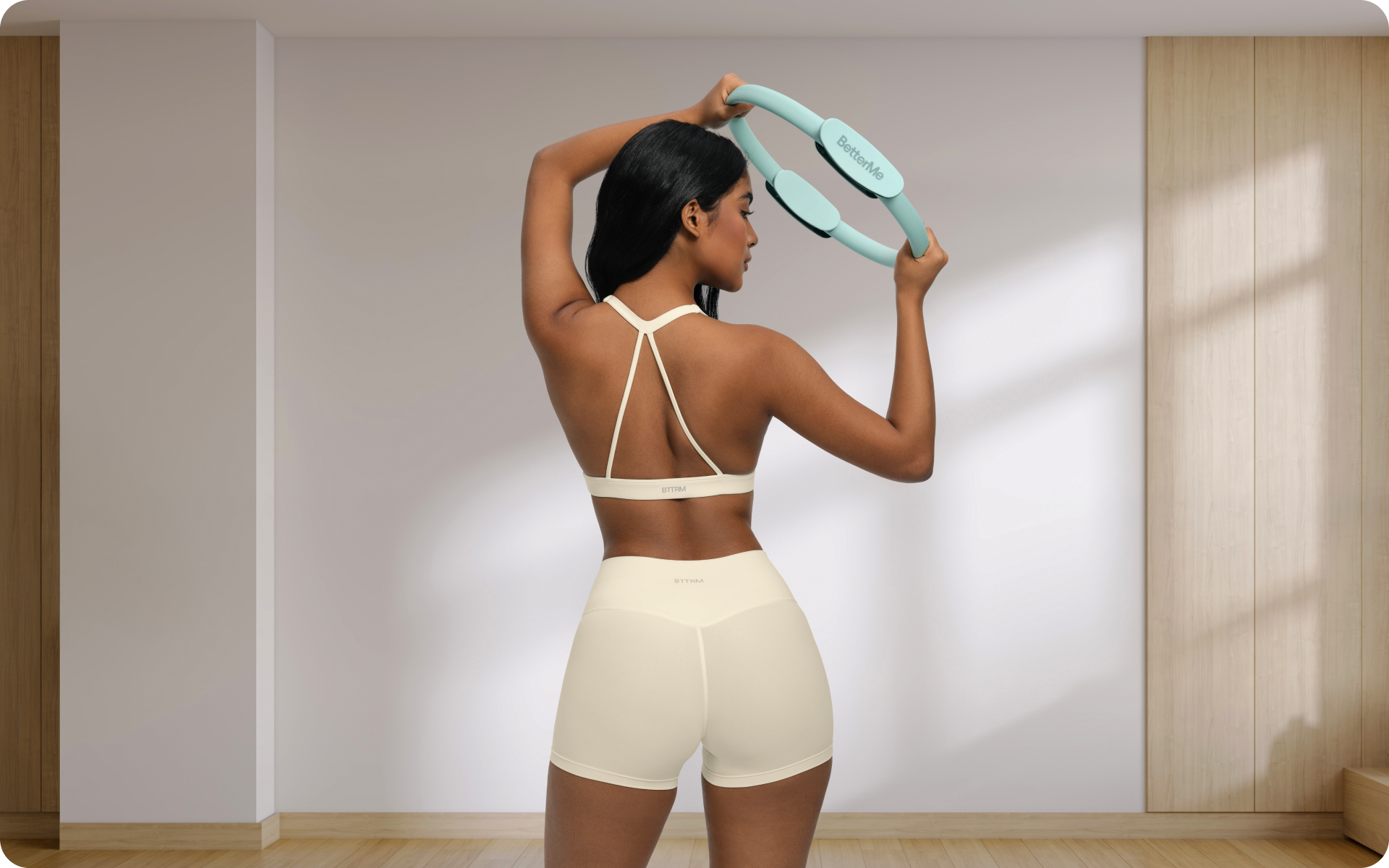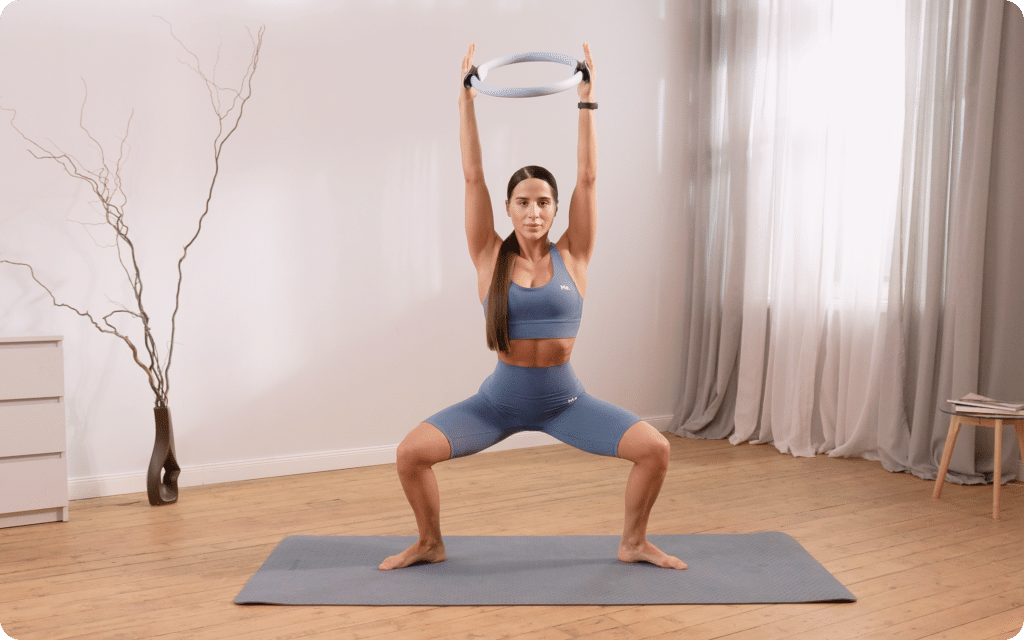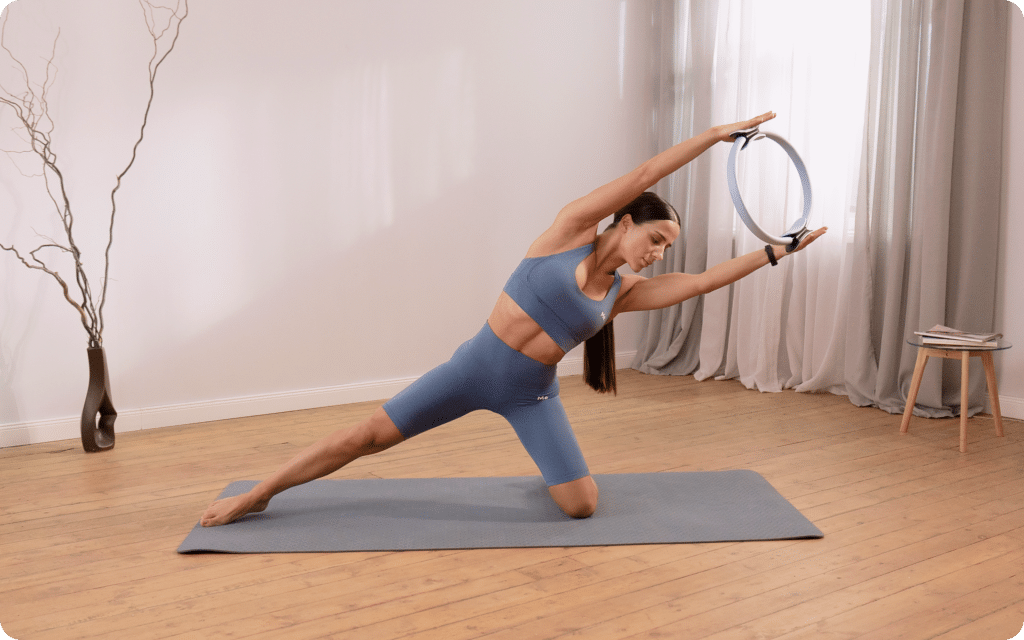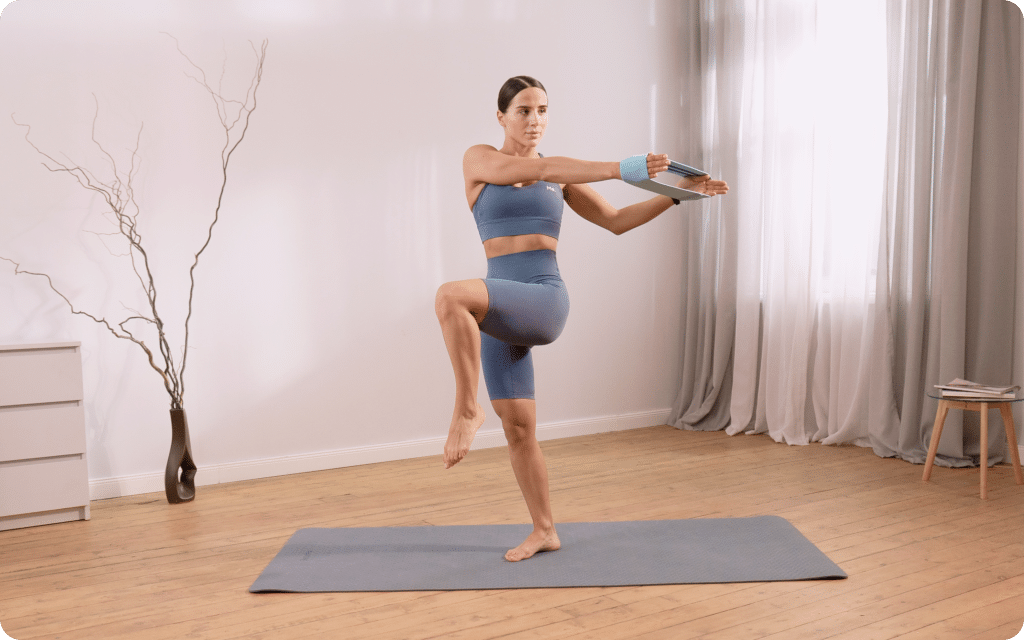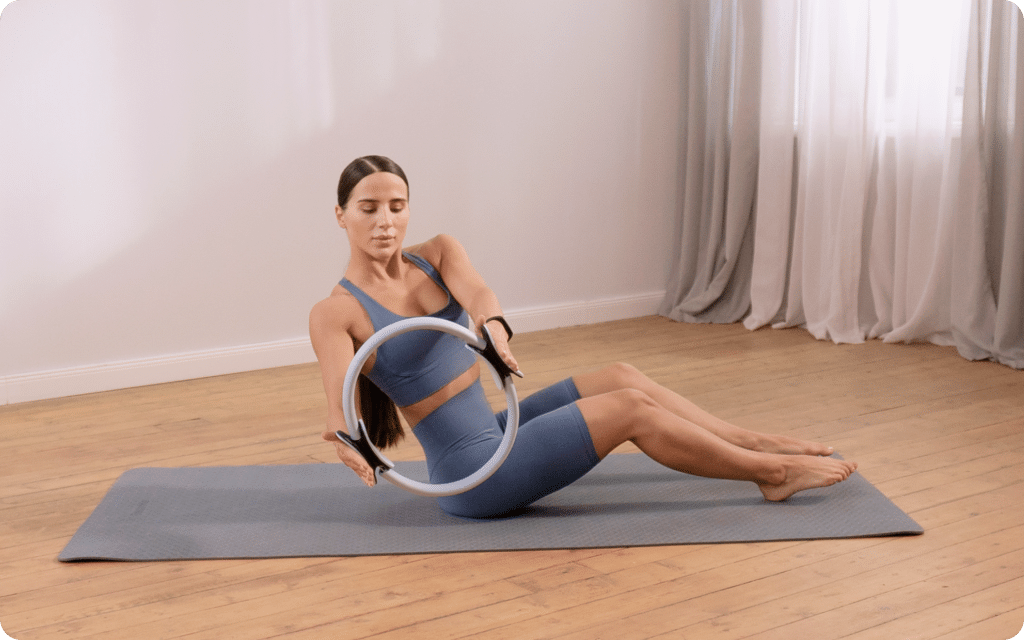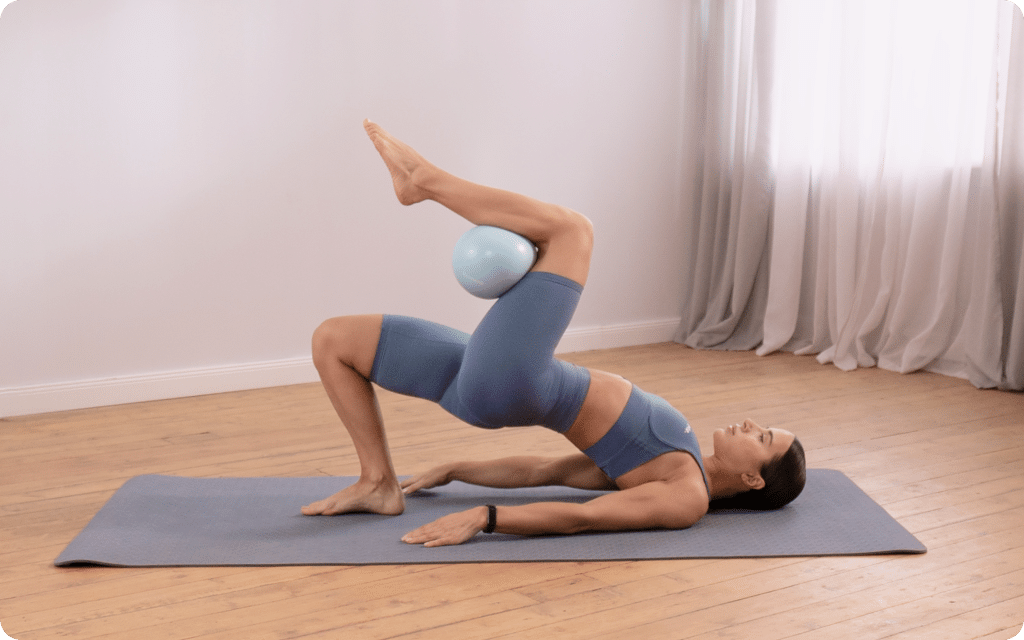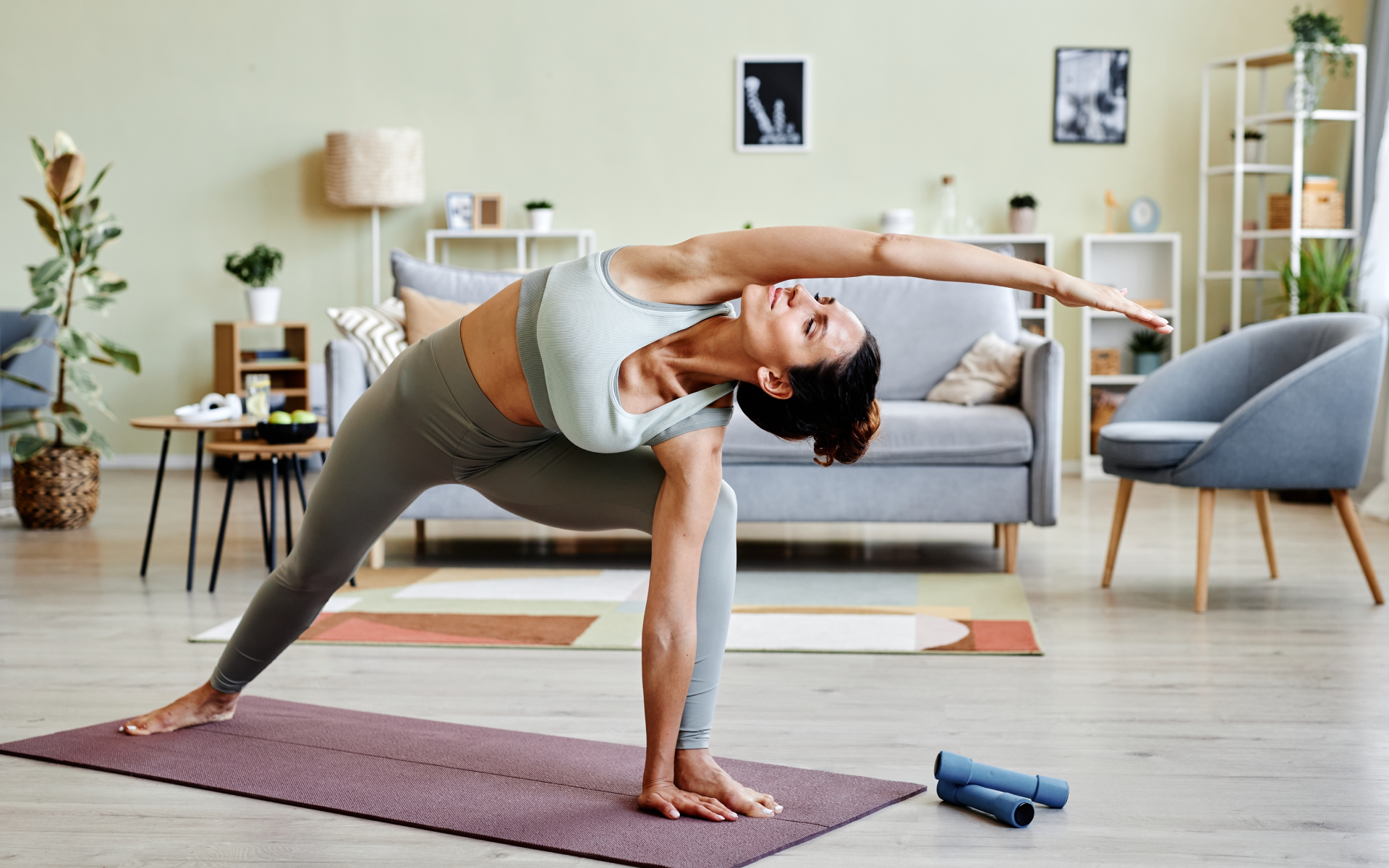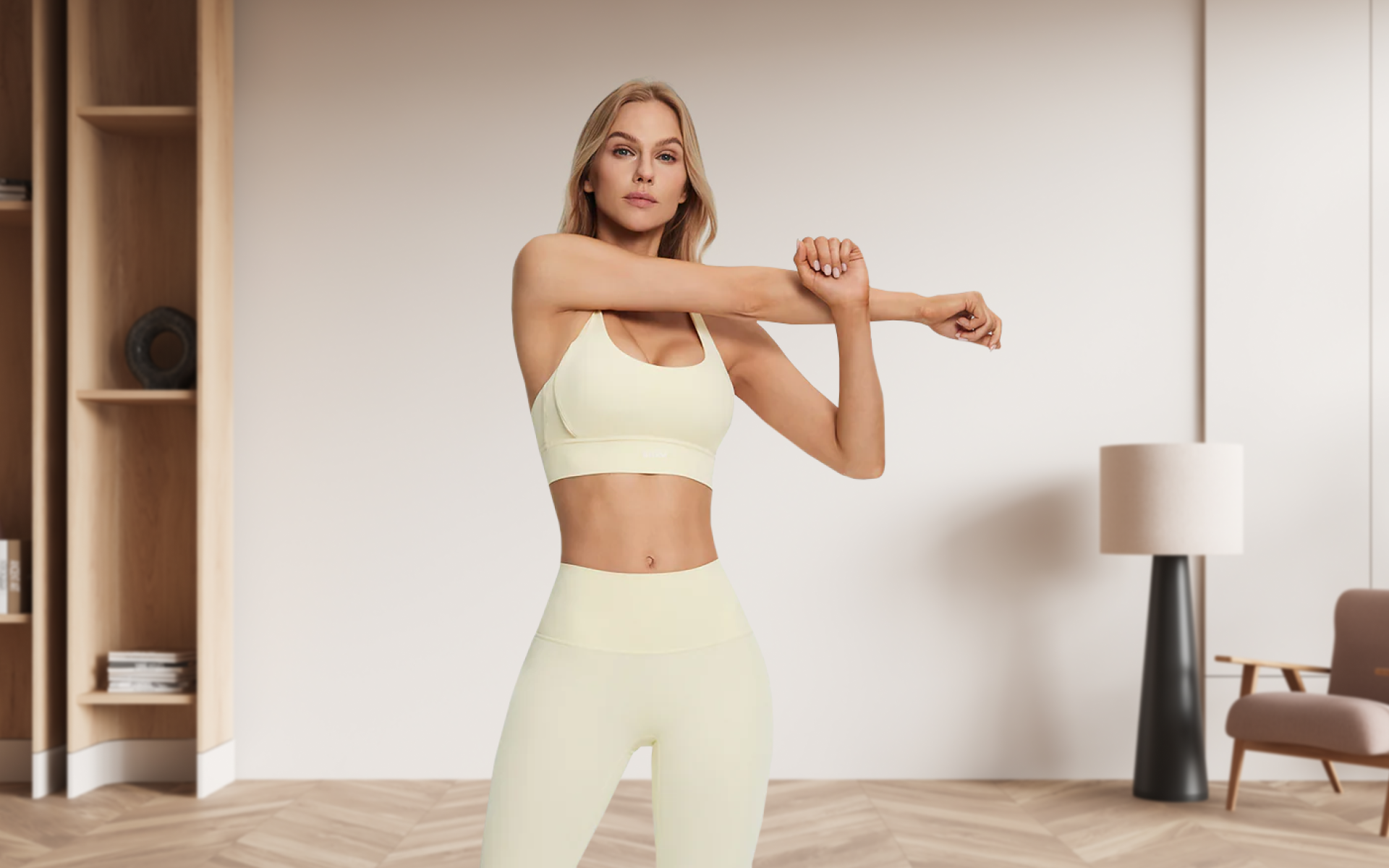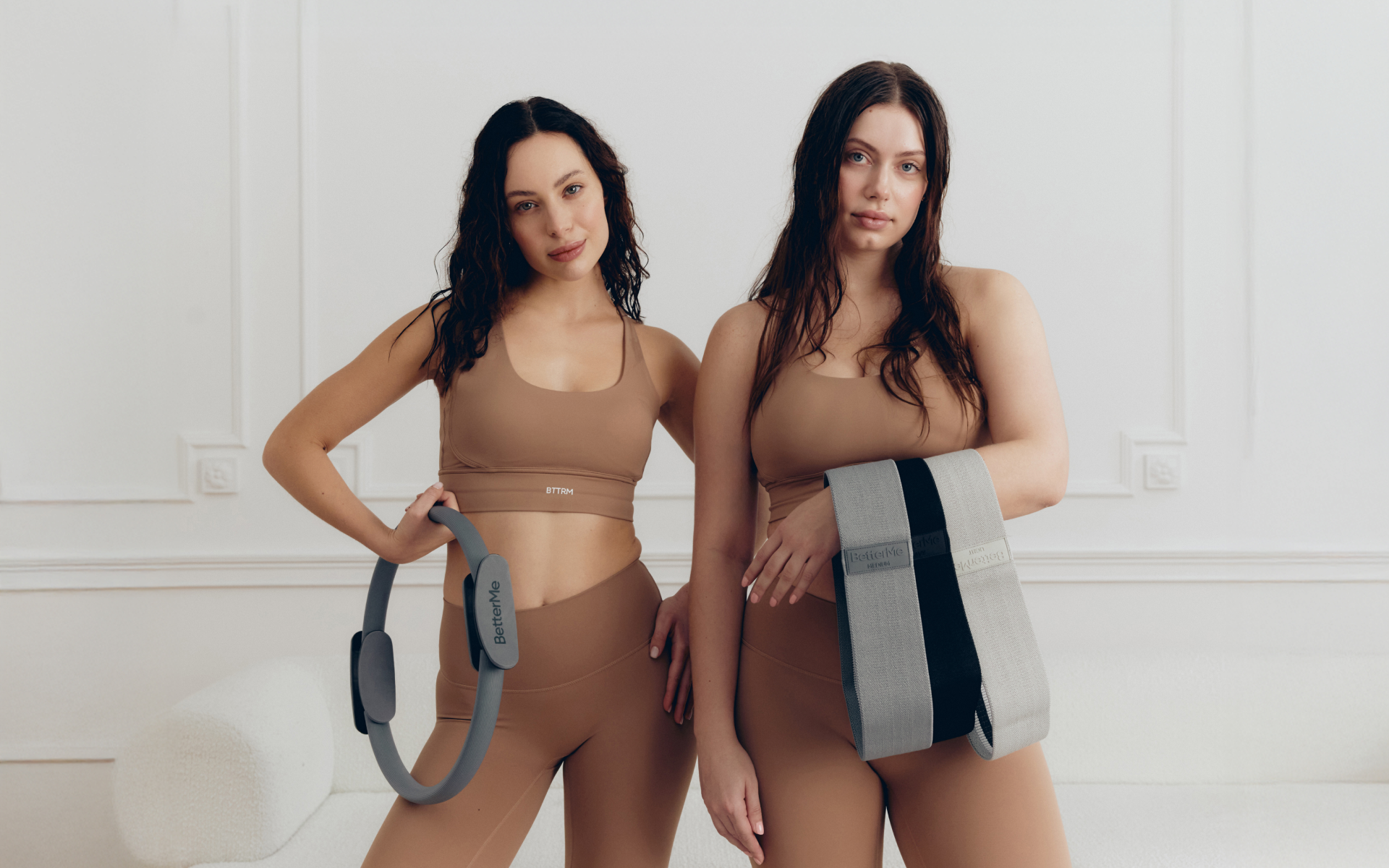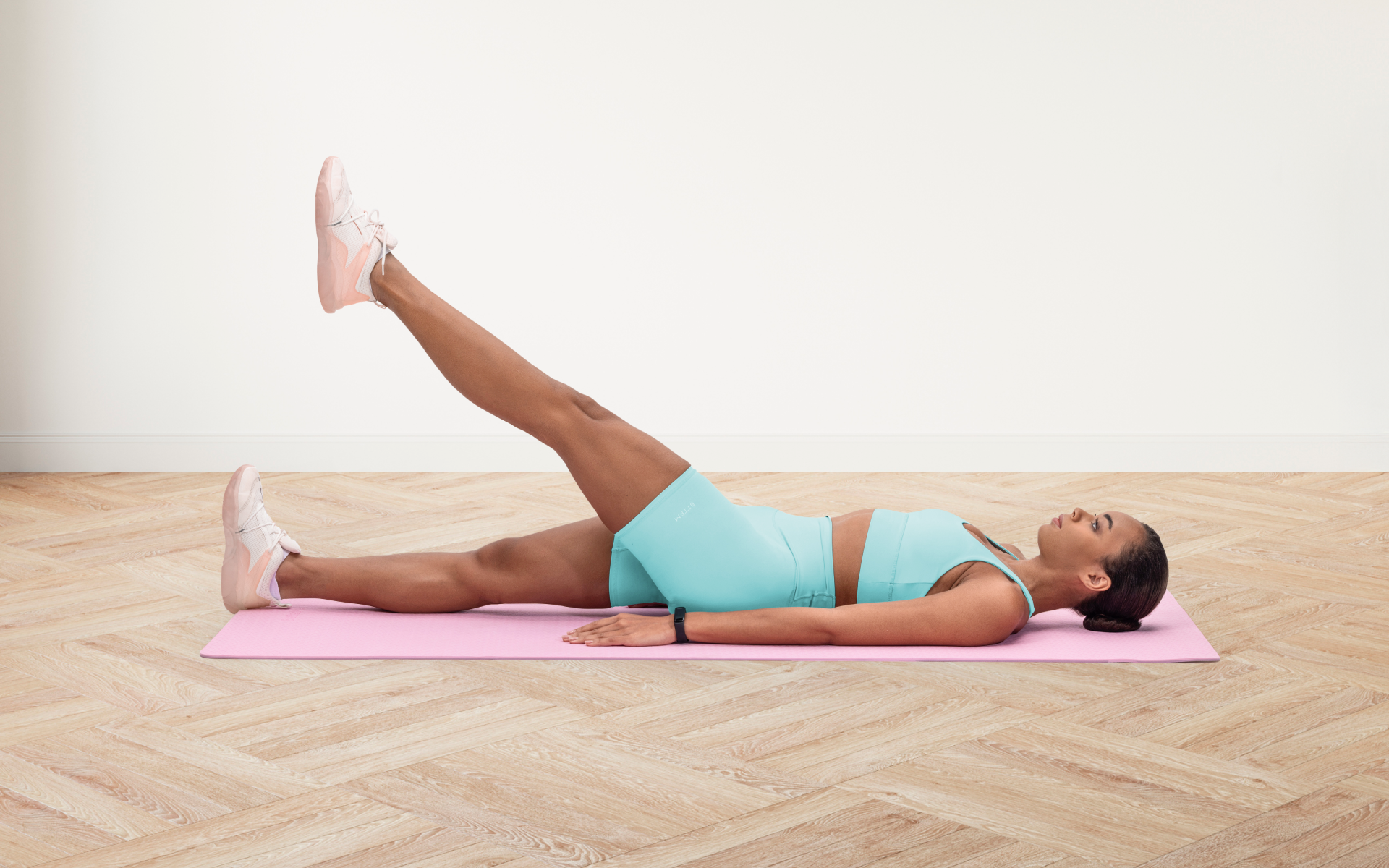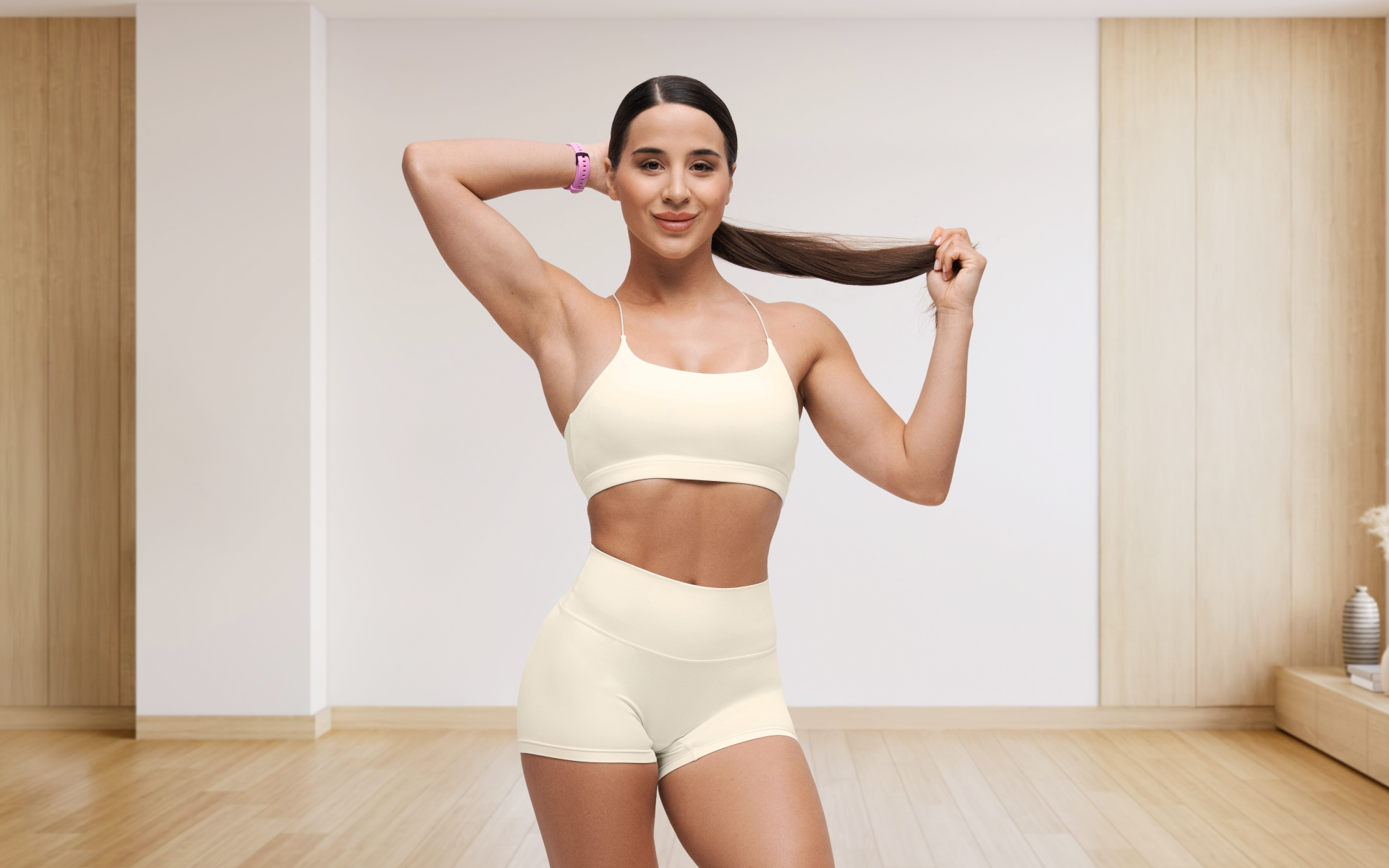The practice of Pilates is all about creating balance and harmony in both your mind and body. With its focus on proper breathing, alignment, and controlled movements, it can help you achieve a more toned and stronger Pilates physique (1).
But the benefits of Pilates go beyond just physical changes.
This low-impact exercise also has a profound impact on your mental well-being, helping to reduce stress levels and increase overall happiness.
As you start incorporating Pilates into your fitness routine, here are 6 body changes to expect, along with how they occur:
What Are The First Pilates Body Changes You Can See?
Pilates has certainly gained popularity for its ability to strengthen, stabilize, and condition the body. But what exactly happens when you commit to Pilates over time?
Are there differences between a Pilates body vs gym body?
We based the 6 significant changes on how this workout method interacts with your muscles, brain, and movement patterns.
1. Improved Core Strength And Stability
Pilates focuses heavily on the “core” muscles, which include the deep muscles of your abdomen, back, and pelvic floor. These muscles act as a support system for your spine and are crucial for maintaining good posture and balance (2).
The slow, controlled movements in Pilates challenge these muscles to work harder.
You’re encouraged to engage them throughout each exercise, which helps build endurance and strength over time (3).
A stronger core doesn’t just look good – it helps protect your lower back, improves athletic performance, and makes everyday activities like bending or lifting much safer (4).
2. Better Posture
When your core is stronger, your posture naturally improves.
Pilates also trains you to become mindful of your alignment. You’ll learn how to position your shoulders, hips, and spine correctly, so your body moves more efficiently (5).
Bad posture, which can come from sitting too long or standing incorrectly, puts strain on muscles and joints (6).
Pilates teaches you to align your body correctly and strengthens the postural muscles, such as your trapezius and spinal erectors, making it easier to maintain an upright and healthy posture.
BetterMe: Health Coaching app helps you achieve your body goals with ease and efficiency by helping to choose proper meal plans and effective workouts. Start using our app and you will see good results in a short time.
3. Increased Flexibility And Range Of Motion
Pilates emphasizes dynamic stretching, where you lengthen your muscles through controlled, flowing movements. This type of stretching encourages your muscles and joints to move through their full range of motion, which can make you noticeably more flexible over time (7, 8).
Unlike static stretching (holding a pose for an extended period), Pilates keeps your muscles warm and engaged while you stretch.
This fluidity can reduce stiffness, prevent injuries, and make your movements smoother and more fluid overall.
4. Greater Muscular Endurance
Pilates often involves repeated, low-impact exercises that target specific muscle groups.
These repetitions, done without added weights, boost muscular endurance, which is your muscles’ ability to work for a long time without getting tired (7, 8).
For example, holding a plank or performing leg lifts in Pilates challenges your muscles in a way that builds stamina. Over time, this can translate to enhanced performance in your workouts, sports, or even daily tasks that require strength and endurance.
5. Enhanced Body Awareness
Pilates requires you to focus on your breathing, alignment, and how your body moves.
This connection between your mind and muscle is often referred to as “proprioception,” which means your sense of where your body is in space (9).
With regular practice, you’ll notice that you move more intentionally and are better able to correct poor habits. This heightened awareness can also reduce your risk of injuries, since you’re more in tune with how your body feels and functions (10).
6. Balanced Muscle Development
One of Pilates’ key principles is balanced strength.
Unlike workouts that may overemphasize specific muscles (like your chest or biceps),
Pilates works all muscle groups more evenly.
For example, while many workouts focus on the larger “global” muscles that drive significant movements, Pilates also prioritizes smaller stabilizer muscles.
This balanced approach helps address muscle imbalances, which can occur when one muscle is stronger or tighter than its counterpart (11).
Reducing these imbalances contributes to a more symmetrical body, which can improve your overall function and reduce strain on your joints.
Read more: Is Pilates Good for Posture?
Can You Get A Good Body Just From Pilates?
The phrase “good body” means different things to different people.
For some, it’s about looking toned or lean.
For others, it might mean feeling strong, flexible, and able to move pain-free.
From a fitness perspective, a “good body” is often one that:
- Feels healthy
- Functions well
- Supports a high quality of life
With that in mind, can Pilates alone get you there?
The answer is that it depends.
Pilates offers an excellent foundation for multiple aspects of physical fitness.
It builds core strength, improves posture, enhances flexibility, and promotes balanced muscle development (1). For many, these changes can give the appearance of a more toned body, especially when combined with consistent practice.
And because sessions are low-impact, Pilates is accessible to a wide range of fitness levels, making it a sustainable approach for long-term movement.
But here’s the nuance. While Pilates can hugely benefit your overall strength and body awareness, it’s not the primary way to build muscle mass or significantly improve cardiovascular fitness. If your goal for a “good body” includes visible muscle definition or higher endurance for activities like running or sports, combining Pilates with resistance training (such as weightlifting) and cardio will likely be more effective.
Two other key factors are diet and lifestyle.
Physical activity alone, including Pilates, can’t completely replace the need for healthy eating habits.
Your body reflects not just your exercise routine, but also your:
- Nutrition
- Sleep quality
- Stress levels
Pilates can complement these elements beautifully by reducing stress and encouraging mindfulness, which may help you make healthier choices overall.
At its core, Pilates isn’t about chasing a specific aesthetic goal.
Yet, if your idea of a “good body” focuses on better posture, improved flexibility, and a strong, functional core, Pilates will deliver.
For a well-rounded fitness routine, incorporating Pilates into a mix of strength training, cardio, and healthy living is a winning formula for looking and feeling your best.
Does Pilates Change Your Body Shape?
Your genetics play a significant role in determining your body shape.
Bone structure, fat distribution, and natural muscle placement are factors you can’t change. For example, whether you’re more hourglass or rectangular is primarily determined by your DNA.
While Pilates can’t transform your genetics, it can improve how your body looks and feels within its natural framework. Our previous article covers everything you need to know about flat stomach Pilates exercises.
What Pilates Can Realistically Achieve
- Improved Muscle Tone
Pilates strengthens and tones muscles, especially in your core, which includes the abdominals, obliques, and back (12). Toned muscles appear firmer and can give your body a more “sculpted” look. Dive deeper into the Wall Pilates for back fat with our dedicated article.
- Better Posture
One of Pilates’ most significant benefits is enhanced posture (5).
Improved alignment can change how your body carries itself, creating a taller, more confident appearance.
- Enhanced Body Composition (With Help)
On its own, Pilates isn’t the most effective tool for significant fat loss, as it’s not a high-calorie-burning workout. However, when combined with a healthy diet and other exercises like cardio or strength training, Pilates can support a leaner, more balanced physique (13).
- Improved Muscle Balance and Flexibility
By addressing muscle imbalances and enhancing flexibility (8), Pilates helps your body move with greater ease. These improvements are noticeable in how you move and your overall comfort in day-to-day activities.
What Kind Of Body Does Pilates Give You?
While Pilates may not necessarily give you a specific body type, it can help you improve your current physique to one with:
- Better posture, as Pilates strengthens the muscles supporting your spine, helping you stand taller and move more gracefully.
- Toned muscles, especially in the core, glutes, and arms, create a more defined and firm appearance.
- A strong core that provides stability and strength to your midsection, improving functionality and support.
- Improved flexibility, allowing for smoother and more fluid movement, as well as greater mobility.
- Balanced muscles, ensuring symmetry by strengthening weaker or less dominant areas of the body.
- Refined movement quality, making your motions controlled, intentional, and graceful.
- A leaner look, achieved over time through muscle tone, better posture, and a balanced fitness regimen
- Heightened body awareness fosters confidence and a more connected mind-body relationship.
If you’re wondering about Pilates before and after 30 sessions, refer to the beneficial changes above for an idea of what to expect!
When it comes to weight loss, progress is made by inches, not miles, so it’s much harder to track and a lot easier to give up. The BetterMe: Health Coaching app is your personal trainer, nutritionist, and support system all in one. Start using our app to stay on track and hold yourself accountable!
Can Pilates Change Your Face Shape?
Pilates does not directly target facial muscles or alter bone structure.
Genetics, aging, and significant weight loss or gain are the primary factors that influence face shape.
That said, stress often shows up in the face, manifesting as:
- Furrowed brows
- Tension in the jaw
- Tight facial muscles.
For example, people who clench their jaw or grind their teeth when stressed may notice strain in the lower face, which can contribute to discomfort or even changes in facial appearance over time. Similarly, constant furrowing of the brow or tightening around the eyes might lead to an appearance of fatigue or tension.
Pilates incorporates controlled breathing and purposeful movements, resulting in an emphasis on relaxation. These relaxation principles can reduce overall stress levels and help release physical tension stored in the body, including the face.
Read more: Is Combining Yoga and Wall Pilates Ideal for an At-Home Workout?
How Quickly Can Pilates Change Your Body?
The timeline for noticeable changes with Pilates varies depending on factors like consistency, fitness level, and individual goals.
Here’s a general idea of what to expect:
1. Posture
Many people notice improvements in posture within a few weeks of regular practice (5). Strengthening the muscles that support the spine can help you stand taller and move more efficiently.
2. Flexibility
Pilates can enhance flexibility within a month or two, especially for beginners.
The controlled stretching and movements promote gradual improvements in range of motion (8).
3. Muscle Tone
Visible toning often occurs after 6-12 weeks of consistent practice.
Pilates uses body weight and resistance to build lean muscle, especially in the core, arms, and legs (12).
4. Core Strength
Strength gains in your core can start becoming noticeable within 4-8 weeks.
A stronger core leads to better stability and balance during both exercise and everyday activities (14).
While minor changes can occur quickly, achieving significant or lasting Pilates results requires a consistent and ongoing commitment, combined with a healthy lifestyle.
Will 20 Minutes Of Pilates A Day Make A Difference?
The guidelines for physical activity recommend this amount of weekly exercise to maintain good health:
- At least 150 minutes of moderate-intensity exercise
- Or 75 minutes of vigorous-intensity exercise
These workout times break down to approximately 30 minutes of exercise 5 times a week (15), which can include Pilates.
Therefore, practicing Pilates for just 20 minutes a day can help you meet the recommended guidelines and potentially lead to noticeable improvements in strength and flexibility.
For the most part, any exercise is better than no exercise at all.
It’s essential to find a form of physical activity that you enjoy and can stick with in the long term. If all you can do is 20 minutes a day, then that’s already better than nothing.
The key is consistency and making exercise a regular part of your routine.
Yes, Pilates focuses on controlled stretching and dynamic movements that increase flexibility over time. Regular practice can improve your range of motion and reduce muscle stiffness (8). Pilates uses your body weight and resistance movements to build and tone muscles (12). It targets the core, glutes, and legs, creating a toned appearance with consistent practice. Pilates places a significant emphasis on engaging the deep abdominal, back, and pelvic muscles. Through various exercises, it builds strength and stability in this region, improving overall functionality and balance (3). Yes, Pilates incorporates mindful breathing and controlled movements, which can help reduce stress and physical tension. It encourages relaxation, leaving you feeling more focused and calm (16). Most people start seeing improvements in posture, flexibility, and core engagement within a few weeks. Visible muscle tone and significant changes typically occur after 6–12 weeks of regular practice (12).Frequently Asked Questions
Can Pilates help with flexibility?
Will Pilates tone my muscles?
How does Pilates enhance core strength?
Does Pilates contribute to stress relief?
How long before I notice changes from Pilates?
The Bottom Line
Pilates offers a unique blend of physical and mental benefits that can transform the way your body moves and feels. From improved posture and core strength to greater flexibility and muscular balance, the practice helps build a foundation for better overall fitness and functionality.
Beyond the physical changes, Pilates also promotes mental well-being through stress reduction and improved body awareness, encouraging a more connected and mindful approach to movement.
While the results of Pilates can be significant, they require consistency and a commitment to dedication.
Incorporating Pilates into a broader commitment to a healthy lifestyle, including proper nutrition, adequate rest, and complementary forms of exercise like cardio or resistance training, can maximize its benefits.
DISCLAIMER:
This article is intended for general informational purposes only and does not serve to address individual circumstances. It is not a substitute for professional advice or help and should not be relied on for making any kind of decision-making. Any action taken as a direct or indirect result of the information in this article is entirely at your own risk and is your sole responsibility.
BetterMe, its content staff, and its medical advisors accept no responsibility for inaccuracies, errors, misstatements, inconsistencies, or omissions and specifically disclaim any liability, loss or risk, personal, professional or otherwise, which may be incurred as a consequence, directly or indirectly, of the use and/or application of any content.
You should always seek the advice of your physician or other qualified health provider with any questions you may have regarding a medical condition or your specific situation. Never disregard professional medical advice or delay seeking it because of BetterMe content. If you suspect or think you may have a medical emergency, call your doctor.
SOURCES:
- Pilates – health benefits (2022, betterhealth.vic.gov.au)
- Abdominal Muscles (2025, physio-pedia.com)
- Pilates to Improve Core Muscle Activation in Chronic Low Back Pain: A Systematic Review (2023, mdpi.com)
- BENEFITS OF BUILDING A STRONG CORE (2023, integrehab.com)
- Effects of Pilates exercises on spine deformities and posture: a systematic review (2024, bmcsportsscimedrehabil.biomedcentral.com)
- 3 surprising risks of poor posture (2023, harvard,edu)
- Pilates for improvement of muscle endurance, flexibility, balance, and posture (2010, nih.gov)
- Effects of stretching in a pilates program on musculoskeletal fitness: a randomized clinical trial (2024, bmcsportsscimedrehabil.biomedcentral.com)
- Physical and psychological benefits of once-a-week Pilates exercises in young sedentary women: A 10-week longitudinal study (2016, sciencedirect.com)
- Body Awareness: a phenomenological inquiry into the common ground of mind-body therapies (2021, peh-med.biomedcentral.com)
- Comparing the effects of Pilates, corrective exercises, and Alexander’s technique on upper cross syndrome among adolescent girls student (ages 13–16): a six-week study (2024, bmcsportsscimedrehabil.biomedcentral.com)
- Effects of a Pilates exercise program on muscle strength, postural control and body composition: results from a pilot study in a group of post-menopausal women (2015, nih.gov)
- Efficacy of Pilates in Functional Body Composition: A Systematic Review (2022, mdpi.com)
- To Compare the Effect of Modified Pilates and Core Stabilization Exercise on Balance, Core Muscle Endurance and Lumbopelvic Flexibility in Elderly Women (2023, ijhsr.org)
- American Heart Association Recommendations for Physical Activity in Adults and Kids (2024, heart.org)
- The impact of Pilates exercise for depression symptoms in female patients: A systematic review and meta-analysis (2023, journals.lww.com)
